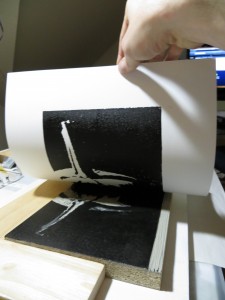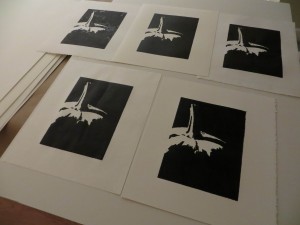Today I experimented with papers designed specially for block printing and had much better success.
I used Dick Blick water soluble printing ink on five different papers. Here are the results:
- Masa Paper – excellent transfer, good detail, inexpensive
- Hosho Paper – good transfer, but very delicate – the ink began to soak through and I had to stop rubbing because the paper was disintegrating
- Canson Edition Bright White – good transfer, but ink sits on top of paper instead of soaking in.
- Rising Stonehenge – poor ink transfer, but I printed on the smooth side so I need to test again on the rough side.
- Daniel Smith Lennox – good transfer, but ink sits on top of paper instead of soaking in.
Overall, it seems that thinner papers with a nappy surface work the best.


